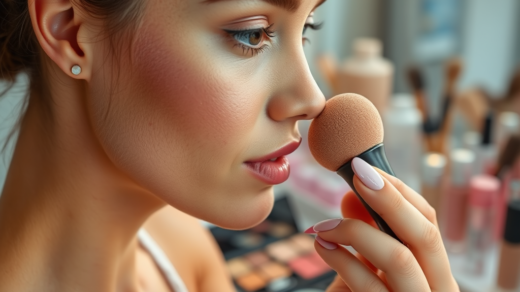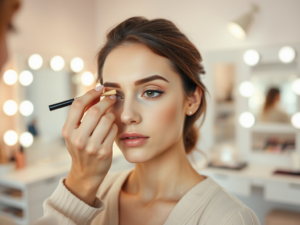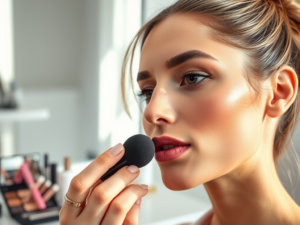Benefits of face pulls
Face pulls are an exceptional exercise that can significantly bolster your shoulder health and overall upper body strength. By focusing more on the often-neglected rear deltoids and upper back muscles, face pulls also engage the muscles responsible for maintaining good posture. While face pulls might not be as well-known as other exercises, their inclusion in strength training and body workouts yields profound benefits—not just for athletes, but for anyone seeking to build a resilient and well-toned physique. This article will explore why incorporating face pulls into your fitness routine is not only beneficial but essential for achieving balanced muscle development and improving overall fitness.
Understanding Face Pulls
Face pulls are a resistance-based exercise typically performed with a cable machine or resistance bands. Their primary target is the posterior part of the shoulders or the rear deltoids, but they also work a range of muscles in the upper back and rotator cuff. The starting position involves standing a few steps back from the pulley with a rope attachment, setting the pulley at around head level, and gripping the two ropes with hands slightly higher than chest height, palms facing each other.

Proper Technique for Maximized Benefits
To ensure you are harnessing the full potential of face pulls, proper form is essential. Your feet should be placed shoulder-width apart, knees slightly bent, and core engaged. Pull the ropes towards your face, maintaining your elbows higher than your wrists and pointing out. Focus on squeezing your shoulder blades together when the ropes reach the sides of your face. Slowly return to the starting position and repeat. Proper technique will help prevent injury and ensure engagement of the intended muscles.
Top Benefits of Incorporating Face Pulls into Your Routine
Shoulder mobility and health are vital for a range of motions and activities, and face pulls are great exercises for this purpose. They not only help to strengthen and stabilize the shoulder joint but can help prevent common injuries by reinforcing the muscles and tendons. For those who might have suffered shoulder pains or are recuperating from injuries, the controlled movements of face pulls are gentle enough not to exacerbate the condition and could lead to improved overall shoulder health.
Bolsters Postural Stability
With many people spending hours sitting at desks, improving posture is more important than ever. Face pulls are effective at conditioning the upper back and rear deltoids, muscles quintessential for proper posture. Regularly performing this exercise helps correct round-shouldered postures, often reducing back pains and other discomfort associated with poor posture.
Boosts Upper Body Strength
Face pulls might look like a simple pull exercise, but the range of muscles they engage and strengthen is vast. From the rear delts to the rhomboids and lower traps, these exercises primarily work to provide a solid foundation for your upper body. This strengthening of the back muscles allows for more balanced and powerful upper body workouts, improving overall strength and conditioning.
The Role of Face Pulls in a Balanced Workout Regime
Incorporating face pulls into your routine creates a balanced approach to your upper body workouts. Pushing movements like push-ups and bench presses are counterbalanced by pulling movements such as face pulls. This helps to avoid muscle imbalances that could lead to injuries and ensures that different muscle groups are worked out equally.
Versatility and Adaptability
An advantage of face pulls is their versatility. They can be easily incorporated into different workout routines, making them suitable for various fitness levels. With alternatives like seated face pulls or standing resistance band face pulls, this exercise could also be adapted to accommodate those with lower back issues or limited access to cable machines.
How Face Pulls Can Improve Athletic Performance
Athletes aiming for optimal performance will find face pulls invaluable for developing muscular symmetry and function. These exercises specifically target muscles that are often neglected, ensuring a more balanced development across the upper body. Improved muscle function translates into better athletic capabilities across numerous sports.
Boosting Shoulder Endurance and Stability
For sports that require elevated levels of shoulder activity—such as swimming, throwing, or even rock climbing—shoulder stability and endurance are critical. Consistently integrating face pulls into workout routines increases strength and endurance in the shoulder area, which is often decisive for peak athletic performance.
Face Pulls: Not Just for Athletes
The benefits of face pulls extend beyond the athletic field; they’re also highly advantageous for daily life. The motion of pulling and squeezing mimics everyday movements such as lifting weights or even just pulling open a heavy door, making these muscles more resilient and less prone to injury during mundane tasks.

Key Takeaways and Tips for Incorporating Face Pulls
As with any new exercise, starting with face pulls should be approached with gradual progression. Begin with lighter resistance to learn good form and only add weight when you can perform the exercise without compensating form. Consistency is also key—as you build up shoulder stability and strength over time, consistent practice will provide the best results.
Common Mistakes to Avoid
Some common mistakes people make when performing face pulls include using too much weight too soon or pulling the rope apart rather than keeping it at a consistent distance. Maintaining good form and avoiding common mistakes will ensure the most effective workout and decrease injury risks.
Adding Variety to Your Face Pulls
To keep your muscles guessing and improving, consider incorporating different variations of face pulls into your fitness routine. Here are two lists to inspire variety in your workout:
- Using Different Equipment:
- Resistance bands instead of cable machines
- Handle attachments over rope for a different grip
- Seated cable rows as good alternatives
- Cutting-edge Variations:
- High pulley face pulls for a vertical angle
- Single-arm face pulls for unilateral training
- Face pulls with external rotation for extra rotator cuff activation
| Variation | Primary Muscles Worked | Suitable For |
|---|---|---|
| Traditional Face Pulls | Rear delts, rhomboids, lower traps | All fitness levels |
| Seated Face Pulls | Rear delts, upper back | Individuals with lower back issues |
| Single-arm Face Pulls | Unilateral rear delts and upper back | Advanced users focusing on symmetry |
| Face Pulls with External Rotation | Rear delts, rotator cuffs | Advanced users for extra activation |

Conclusion
In summarizing the benefits of face pulls, it’s clear why this exercise is a staple for many successful workout routines. Incorporating face pulls can help improve posture, boost shoulder health and upper body strength, and effectively balance your fitness regimen. By practicing face pulls with good form and patience, you will help guarantee wholesome development and resilience in your upper body, ultimately enhancing both your athletic performance and day-to-day functionality.
FAQs
Q1: How often should I perform face pulls in my workout routine?
A1: Face pulls can be performed 2-3 times per week, ideally on days you work on your upper body or as part of a balanced workout program.
Q2: Can face pulls be done at home, and if so, what equipment do I need?
A2: Yes, face pulls can be done at home using a resistance band with a door anchor or hooked around a sturdy object at shoulder height.
Q3: Are face pulls suitable for beginners in fitness?
A3: Absolutely, face pulls are a low-impact exercise that can be easily scaled down for beginners by using lighter resistance and focusing on proper technique.
Q4: What are the most common mistakes to avoid when doing face pulls?
A4: Common mistakes include using too much weight, leading to compromised form, not squeezing shoulder blades at the end of the movement, and pulling the band or cable toward the neck instead of the face.
Q5: Is it possible to overtrain with face pulls, and how can I prevent it?
A5: Overtraining with any exercise is possible if done excessively or with improper form. To prevent overtraining with face pulls, ensure adequate rest, maintain proper form, and vary your workouts to engage different muscle groups.







